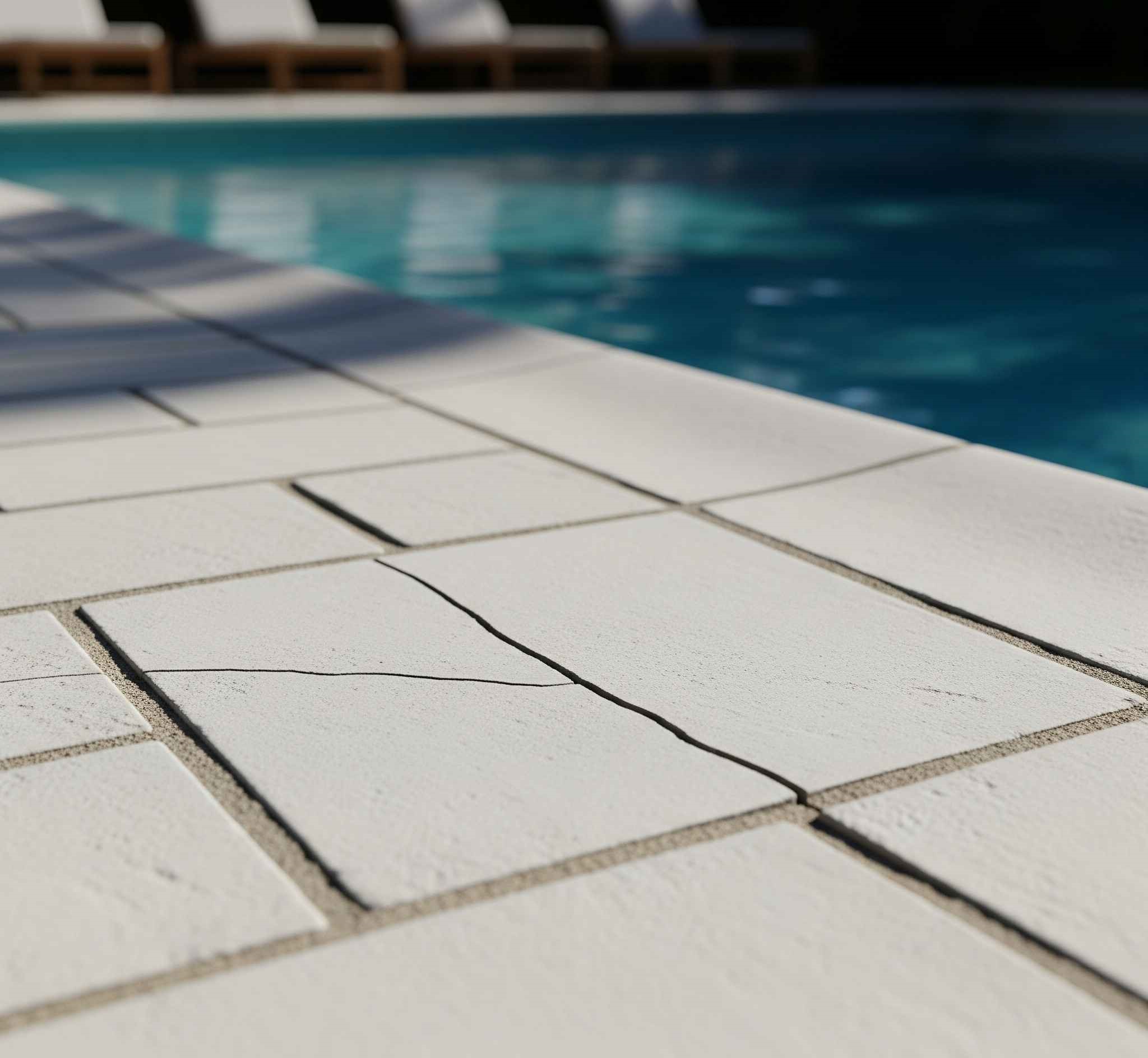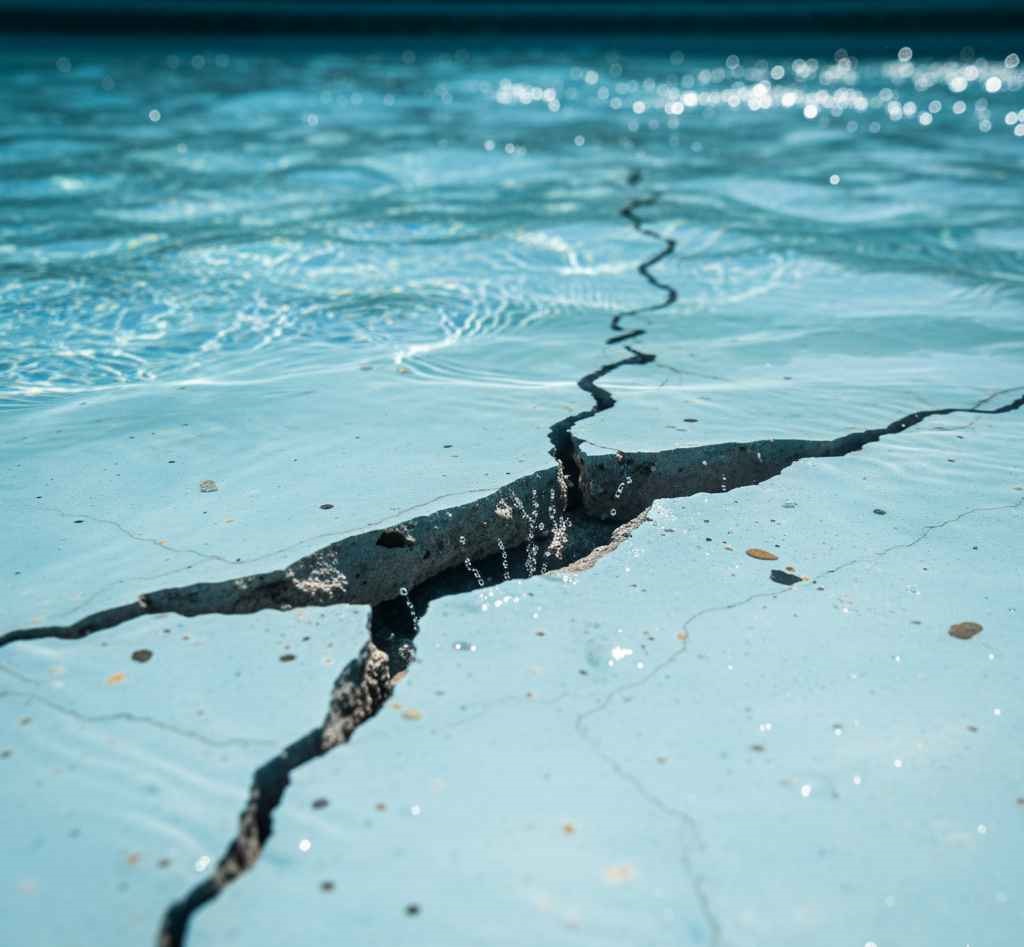Cracks in Your Pool: Are They Dangerous? A Guide to Detect and Repair Them

Seeing a crack in your swimming pool can be alarming. You might wonder if it’s just a cosmetic flaw or a sign of a serious, dangerous problem. The truth is, not all cracks are equal. Some are harmless, but others can lead to major structural damage and costly repairs if ignored. This guide will help you understand the different types of cracks, how to spot them, and what to do next.
Understanding the Types of Pool Cracks 🛠️
The type of crack you have depends on your pool’s material.
1. Hairline Cracks: These are thin, superficial cracks, often just on the surface of the plaster or concrete. They usually don’t go deeper and are typically not a sign of a major structural issue.
What they look like: Thin, spiderweb-like lines.
Danger level: Low. They are mostly cosmetic and can be a normal part of a pool’s aging process.
2. Structural Cracks: These are a different story. They are deep, wide, and often extend through the pool’s shell. They can indicate a problem with the foundation or a shift in the ground underneath the pool.
What they look like: Wide, deep cracks that may run horizontally or vertically. You might also notice them getting bigger over time.
Danger level: High. These can cause significant leaks, structural failure, and pose a safety risk. ⚠️
3. Fiberglass Cracks: Fiberglass pools can also get cracks, usually due to stress from the surrounding soil or improper installation. They may appear as stars or long lines.
What they look like: Starburst patterns or long, straight lines.
Danger level: Medium to High. They can lead to leaks and delamination if not addressed.
How to Detect a Crack and Find a Leak 🔎💧
Finding a crack is one thing, but figuring out if it’s leaking is the critical next step.
Visual Inspection: Start by looking at your pool’s surface. Check the plaster, tile line, and corners.
The Bucket Test: This is the most reliable DIY method for checking for a leak.
Place a bucket on a step in your pool.
Fill the bucket with pool water to match the pool’s water level.
Mark the inside of the bucket and the outside of the pool at the water line.
Check the water levels after 24 hours. If the pool’s water level dropped more than the bucket’s, you likely have a leak.
Here’s an example of a common hairline crack that is usually not serious:

In contrast, a structural crack like this indicates a more serious problem:

When to DIY and When to Call a Pro 🏡
DIY: You can handle minor hairline cracks with an epoxy repair kit. These are usually simple to apply and can prevent the crack from getting worse.
Call a Pro: For any structural crack, a leak you can’t find, or a fiberglass crack, it’s essential to call a professional. They have the right tools and expertise to properly diagnose the problem and perform a long-lasting repair. Ignoring these issues can cost you much more in the long run.
Don’t let a small crack become a big problem. Ensure the long-term safety and beauty of your pool by getting professional help today.

